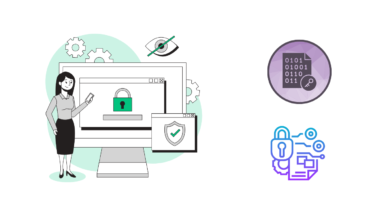How to Write More Secure Code with Feedback from Pentesting Reports

Most developers love writing elegant, fast, and functional code, but not necessarily secure code. Security often feels like a layer added at the end, once the product is built and shipped. But in reality, security starts at the keyboard, line by line.
One of the most overlooked resources for improving code quality is something many teams already have but underutilize: pentesting reports.
Pentesting, short for penetration testing, simulates real-world attacks to uncover vulnerabilities in your application. The reports that come out of these tests aren’t just checklists for your security team; they’re goldmines of insight for developers who want to understand where and why their code might be at risk.
When used properly, feedback from a pentesting tool can guide you to write safer, smarter, and more resilient code. Let’s explore how.
Understanding What Pentesting Reports Really Tell You
A common misconception is that pentesting reports are only meant for CISOs or auditors. In truth, they’re one of the most valuable feedback loops a developer can have.
A pentesting tool looks at your application the way an attacker would, scanning for weak endpoints, insecure APIs, unprotected data flows, and flawed authentication logic. When testers compile their findings, they’re not just pointing out errors; they’re mapping how real-world threats might exploit your code.
Think of the report as a mirror: it reflects both your application’s strengths and its weakest points. Each vulnerability points to a coding decision, an unchecked input, a misconfigured header, or a missing validation rule. Once you understand why it happened, you can write future code that avoids the same pattern.
Turning Vulnerabilities into Coding Lessons
Pentesting reports are filled with insights that can sharpen your coding instincts. Let’s look at a few examples:
SQL Injection Vulnerabilities:
If a report highlights SQL injection flaws, that’s a clear signal to sanitize and parameterize your database queries. Using ORM libraries or prepared statements prevents user input from being executed as part of the query.
Cross-Site Scripting (XSS):
Frequent XSS alerts often indicate inconsistent output encoding. This teaches developers to always validate and escape dynamic content before rendering it on the front end.
Insecure Authentication Flows:
If the report mentions weak session handling or token reuse, it’s a cue to strengthen session expiration policies, use HTTPS everywhere, and rely on proven authentication frameworks.
Each issue, when properly reviewed, becomes a small masterclass in secure coding. The goal isn’t to eliminate all vulnerabilities at once; it’s to evolve your habits so that future code is inherently more secure.
Integrating Pentesting Feedback into Your Development Cycle
To get the most out of pentesting reports, treat them as part of your DevOps feedback loop, not a post-mortem document. Here’s how to do that effectively:
Share Findings Across Teams
Don’t let pentesting reports sit in a security inbox. Host review sessions where developers, QA testers, and security engineers discuss findings together. This helps developers understand the business impact behind each issue.
Prioritize Based on Risk, Not Quantity
Not all vulnerabilities are equal. Some pose immediate threats (like data leaks), while others are low-severity misconfigurations. Use the report’s risk scores to focus your efforts where they matter most.
Create Secure Coding Checklists
Each time your team completes a pentest, document the most frequent issues and turn them into internal best practices. Over time, this evolves into a reusable, secure coding checklist tailored to your application’s architecture.
Integrate Findings into CI/CD
Some pentesting tools can integrate directly with your CI/CD pipeline, allowing automated scans to run whenever new code is deployed. This ensures that previously identified vulnerabilities don’t reappear.
Collaborate, Don’t Blame
One of the biggest pitfalls when sharing pentesting results is the blame game. Developers might feel targeted, as if the report highlights their mistakes. But in reality, pentesting isn’t about fault, it’s about resilience.
Encourage a culture where security findings are treated as learning opportunities, not performance critiques. A good practice is to anonymize code snippets in team-wide reviews so discussions focus on the fix, not the individual.
Remember, the most secure organizations aren’t those with perfect code; they’re the ones that learn and improve continuously.
Choosing the Right Pentesting Tool for Developer Feedback
Not all pentesting tools are created equal, especially when it comes to actionable feedback for developers. The right tool should go beyond vulnerability detection and offer contextual insights.
Here’s what to look for:
- Clear remediation guidance: Detailed explanations on how to fix each issue, not just vulnerability IDs.
- Dev-friendly integrations: Compatibility with Jira, GitHub, GitLab, or Slack for faster issue tracking.
- Low false-positive rates: Reports should be accurate enough that developers trust the findings.
- Support for modern applications: The ability to test APIs, SPAs, and microservices-based architectures.
A good pentesting tool bridges the gap between discovery and remediation, turning technical reports into actionable improvements. When developers receive specific, verified feedback, they’re far more likely to act quickly and confidently.
From Reaction to Prevention: The Secure Coding Mindset
Security isn’t just about responding to vulnerabilities; it’s about preventing them from happening in the first place.
Here’s how developers can shift from reactive to preventive coding:
- Learn from every report: Each pentest uncovers lessons that should influence how future code is written.
- Build security patterns: Reuse secure code snippets and frameworks that have been tested and approved.
- Adopt “security-first” thinking: Just as you optimize for performance or UX, start optimizing for security.
With every sprint, use pentesting feedback to evolve your team’s secure coding culture. Over time, you’ll notice fewer vulnerabilities being reported, not because pentests got easier, but because your code got smarter.
Closing the Loop: Continuous Learning through Pentesting
The best development teams view pentesting as an ongoing dialogue between code and attacker logic. Each report is a new conversation, offering deeper insights into how your software behaves under pressure.
By reviewing these reports regularly, implementing fixes, and adjusting your coding standards accordingly, you build a natural defense system into your workflow. It’s not about chasing zero vulnerabilities; it’s about staying one step ahead.
In today’s world of fast-paced software delivery, integrating insights from a pentesting tool isn’t optional. It’s one of the few ways to ensure your innovation doesn’t come at the cost of security.
Secure code isn’t written overnight, but it’s built one informed decision at a time, with every pentesting report lighting the path forward.




